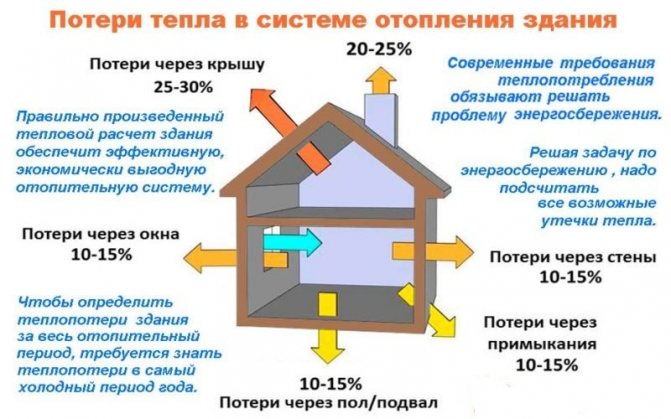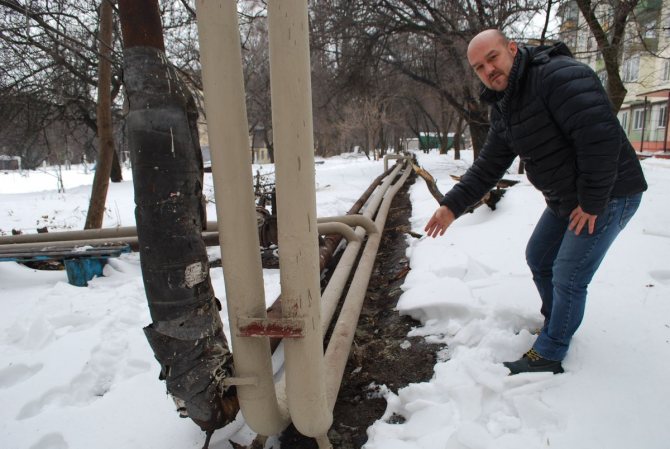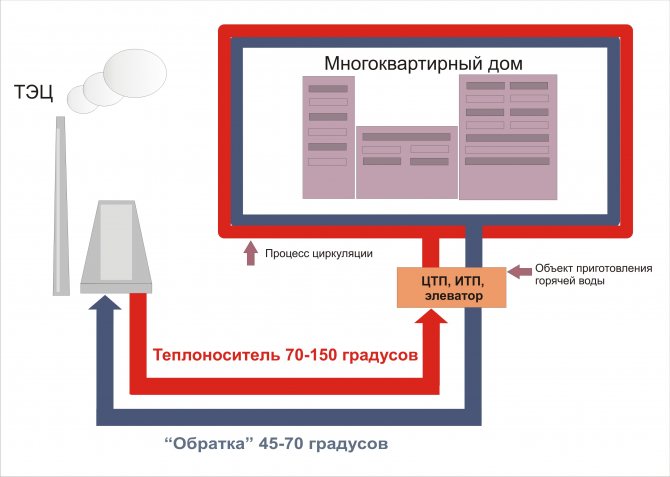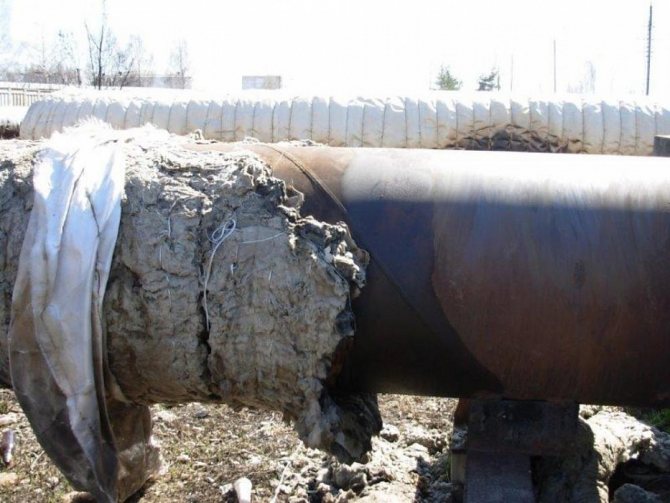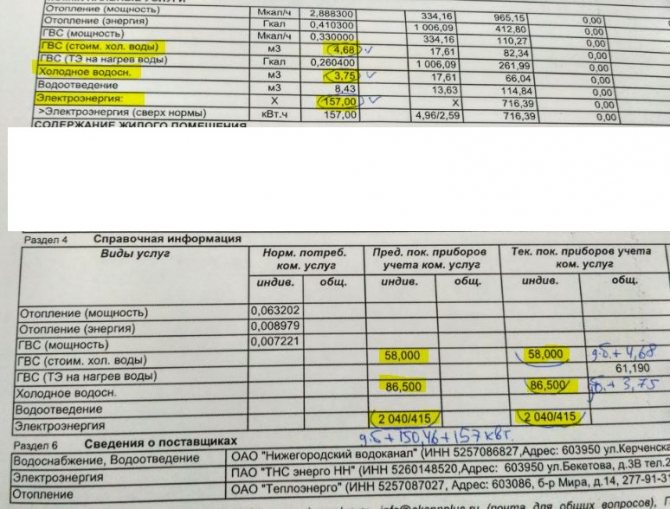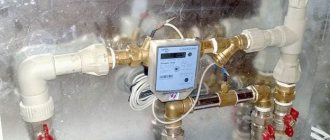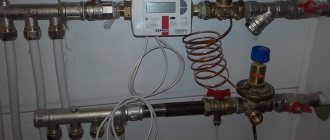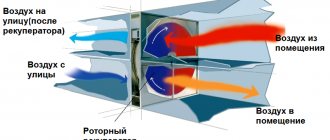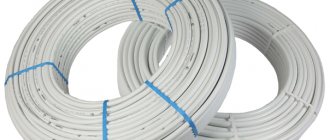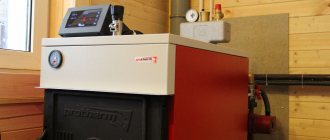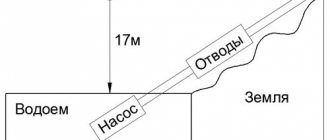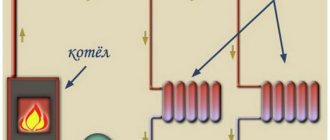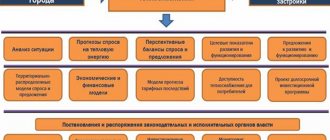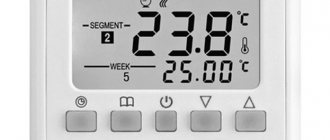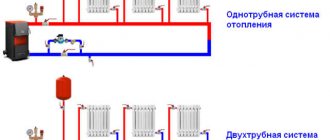Heat energy for hot water supply in the receipt - what is it? 2020 year
Modern man prefers to live in comfortable conditions with a minimum of inconvenience. Someone generally considers it unthinkable when there is no hot water supply in an apartment or private household. But not all consumers of housing and communal services have an idea of what a hot water supply is. In the past, installing an autonomous hot water supply system in rural areas was considered an exclusive and expensive option. Today the situation has changed significantly.
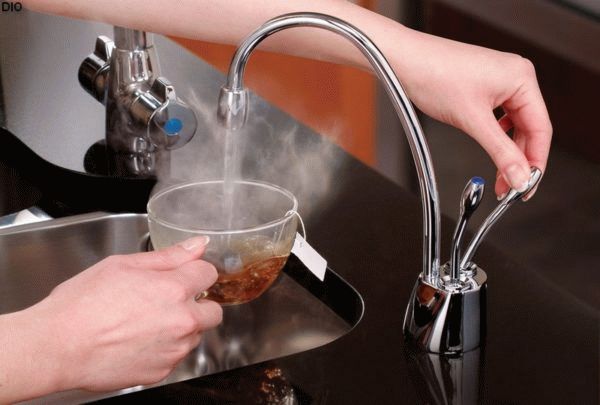
Hot water supply is a service for providing residents and business entities with H2O at a certain temperature. GVS is also an indicator of the standard of living and well-being of citizens. The basis of the natural resource supply system is made up of special equipment, through which water becomes hot and supplied to the end consumer. These processes involve: pump, pipes, water heater, fittings and other technical means.
The Rules for the Provision of Utilities (RF PP dated 06.05.2011 No. 354) establish that the temperature of the water in the hot water supply system should vary in the range from 60 to 75 degrees Celsius. The indicated values also correspond to the sanitary norms in force in Russia. But the temperature regime may slightly deviate from the standard indicators: hot water can be supplied during the day (5.00-00.00) with an error of up to 3 °, and at night (00.00.-5.00.) - up to 5 °.
In case of inconsistency of real indicators with the established norms, the consumer is given the right to recalculate the consumed resource. To do this, it is necessary to make a measurement of H2O with the participation of representatives of the management company / housing and communal services. Based on the results of the check, an act is drawn up, on the basis of which the payment for heating water in an apartment building is adjusted or left unchanged.
There are several schemes by which the resource is brought to the desired temperature and supplied to the consumer. The hot water supply system in an apartment building, operating on a dead-end principle, is designed for round-the-clock use of hot water. If the resource is not completely consumed, the remainder loses the desired temperature during transportation and becomes warm. To fix the described drawback, you have to drain the water for a long time, and this is not very convenient.
With the circulation principle of the DHW system, a liquid of the same temperature always flows from the tap, but in this case, the consumer has to pay more. To stabilize the mode, special pumps are used by analogy with heating systems provided in multi-storey buildings. Hot water can also be provided by differentiating the volume at different temperatures.
At the initial stage, cold water enters from an external network or a central main, then it is heated in a heat exchanger and transported to nodes of a surface or underground type. This option for providing DHW has undeniable advantages.
In particular, there are no toxic substances and noxious impurities in the liquid, and the temperature of the supplied resource is always stable. However, a closed hot water supply system provides for the installation of storage or flow heaters. It is also necessary to have a supply and return pipelines to ensure circular circulation of the liquid.
Water comes from the taps of the central heating unit.An open hot water supply system is equipped with a heat carrier that is transported through a pipeline by means of pumping equipment or naturally. The specified method of fluid supply is flawless even in conditions of the risk of leaks, when a huge pressure is created inside the structure.
To provide residents of an apartment building with hot water, a whole complex of technical devices is provided. It includes:
- elevator unit - regulates the functionality and quality of the heating system;
- water metering unit - controls the flow rate of H2O, deactivates the process of supplying cold liquid to all floors in order to carry out repair work, carries out its coarse filtration;
- bottling;
- risers;
- eyeliner;
- boiler / gas water heater.
The internal design of the water supply system must be carried out in strict accordance with the norms of SNiP (No. 2.04.01-85).
Not all residents of apartment buildings understand this term. What is a thermal energy component? In fact, this is a list of services mediated in the housing and communal services system, with the help of which the temperature of the supplied resource to the consumer rises. They include costs for: maintenance of the central hot water supply system, transportation of hot water, losses of heat energy in pipelines. The owners of square meters pay for hot water supply services, based on the readings of individual metering devices. In the absence of a meter, hot water supply is compensated by residents, taking into account the established standard.
Those who have a very distant idea of what water heating is, which is highlighted in a separate line in receipts, should know that expensive equipment that operates on electricity is needed to raise the temperature and supply the liquid. In this regard, this service is not cheap for the consumer. To make sure that the amount for hot water supply in the receipt is charged correctly, you need to make the calculations yourself.
Initially, you should find out the value of the cost of heat energy, which is established by the authorized body at the regional level (tariff commission). If there is an IPU, it is enough to multiply the volume of the consumed resource by the official cost of the resource in the constituent entity of the Russian Federation where the owner of the apartment lives. If there is no meter, then the costs for hot water supply are determined according to a special formula by multiplying the regional standard for hot water supply, the established tariff for the specified service, taking into account the financial interests of the resource supplying organization and the number of people living in square meters.
In the event that the owner of the living space has doubts about the correctness of the accrual of amounts for hot water supply services, he has the right to contact the Criminal Code for clarification. The inclusion in the receipt of a separate line of expenses for heating water is legal if the corresponding decision was made at the general meeting of owners. In case of disagreement with the accrued amount, a written claim must be sent to the management company or HOA. If these legal entities ignored the complaint and did not provide a reasoned response within a month, then you should contact GZI. In case of disagreement with the arguments of the housing inspectorate, it is advisable to use the opportunity to defend rights in the prosecutor's office and in court.
Nowadays, every homeowner should know how to make their own calculations for hot water services. Ignoring the verification of the accrued amounts in the receipts can translate into a significant overpayment for the supply of a natural resource.
This term means energy consumption for water heating. Heat energy in the receipt is paid as DHW. This abbreviation is indicated in the payment order. This simplification is necessary in order not to confuse consumers in technical terms.
Few people meticulously read payment orders. Usually tenants pay attention only to their name and the amount to be paid.However, detailed knowledge on this issue will reveal an error in the calculation of payments. Usually, when reading a document, abbreviations cause difficulties. It is not always possible to find the current account number. Other problems may arise.
In order to avoid all of the above, it is recommended to study the payment sample. What items should be in the receipt of housing and communal services is established by law. The form of the document is also standard.
This is how hot water supply is indicated. However, payment is charged not so much for water, but rather for heating it. This is exactly what the heat energy in the receipt means.
This is interesting: Fire safety standards for residential buildings 2020
The house may not always be equipped with a centralized heating system or hot water supply. If a column is installed in the apartment, you will not have to pay for hot water supply. The source is important. Thermal energy for hot water supply is what comes from the outside: from the side of an autonomous adjoining boiler house, from district or city networks.
The last important change in this area was the introduction in 2013 of a two-stage tariff. It was since then that people began to pay for hot water supply as for cold water and a component of its heating. This normative act is the Government Decree No. 406 of May 13, 2013. The document is constantly changing. The last amendments were adopted in October 2020. Based on the decree, a component of thermal energy for water heating appeared in the receipts. This made the payment more transparent.
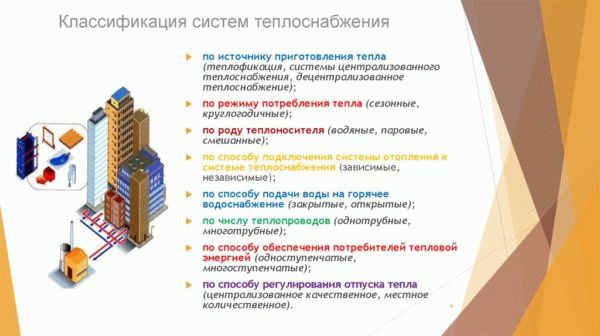

The organization of hot water supply and heating is an important issue for public utilities. This industry is being actively researched by scientists. As a result, a lot of classifications are born.
- Systems are divided into intra-house, district, city and inter-regional.
- Determining what a hot water supply is in a receipt, experts can subdivide it depending on the type of fuel: electricity or gas.
- Systems can be autonomous or centralized.
- Subdivided into single-pipe or multi-pipe.
However, consumers are primarily concerned with the distinction between open and closed systems. Let's see what the difference is.
The first term means that the apartment receives hot water from the communal network. At the beginning of the season, the specialists of the housing office simply open the valve through which the energy carrier enters the heating system. The same unit is also available for domestic hot water supply.
In the second case, hot water is heated directly in the apartment. Moreover, we can talk not only about water supply, but also about heating.
In general, open and closed heating systems are equally widely represented in Russian apartments.
If necessary, water heaters or boilers are installed in the apartments. The equipment is designed to fulfill a common purpose. But the principle of operation is different for the two systems.
The water heater passes a stream through itself through a section of the pipe that is exposed to strong heating. For the second while the water passes this area, it acquires the required temperature.
The boiler works on the principle of accumulating water in a tank. The device can maintain the temperature for a long time. However, its disadvantage is that the water heats up for a long time.
You need to pay for DHW only with an open supply system. If there is a water pump in the house, the tenants consume more gas. Consequently, they receive payment for this particular resource.
Thermal energy for the needs of hot water supply is calculated using the formula, taking into account the following factors:
- the current tariff;
- resource consumption for water heating;
- heat loss coefficient.
That is, for the loss of heat, which inevitably occurs during the passage of boiling water through the pipes, the consumers themselves pay, and not the suppliers.
This is what the hot water component is.This is compensation for water heating, which is carried out by public utilities.
Management companies' tariffs are not always objective. If you do not check for them and do not appeal the receipts, inflated bills will continue to be addressed to the owners. Let's consider how to calculate the heat energy for hot water supply.
- tariff for a cubic meter of cold water supply;
- the amount of hot water consumption (according to the meter on the hot water pipe);
- established and unchanging standard for heating 1m3 of water at the current rate.
Usually, when determining the price of the heat component, the management company makes its own calculations, the results of which are notified to residents at general meetings. If the Criminal Code arbitrarily increases the cost of hot water supply in the subsequent time, its actions can be appealed. The court in this case is not the only possible instance.
First of all, you shouldn't endure. Until the error is appealed, unfair charges will continue. If DHW heating in the receipt has become a controversial point, you can try to contact the UK itself. It is not uncommon for companies to meet customers halfway and recalculate.
However, if there is an error in the receipt for utilities, and the Criminal Code does not want to notice it, you can contact:
- to Rospotrebnadzor;
- Federal Antimonopoly Service;
- the prosecutor's office;
- court.
Sometimes a line with DHW appears in the receipts of residents who actually do not receive this service. For such a Criminal Code, you can be punished with serious fines and recalculate.
However, even in the case of blatant arbitrariness, the payment of bills cannot be refused. Until the end of the proceedings, any failure to pay will be treated as accumulating debt.
The heat energy component is one of the components of the payment for hot water supply. It is calculated by specialists based on the communications of a particular house. Hot water prices should not rise without government approval or a tenant meeting. In case of arbitrariness of the Criminal Code, the actions of the company must be appealed and to seek justice.
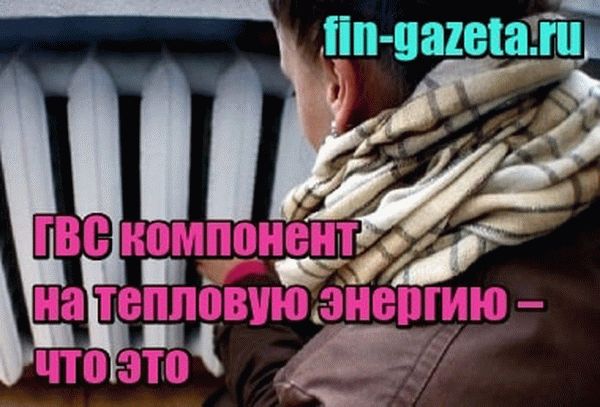

Recently, a line called DHW has appeared in utility bills. Many residents do not understand what it is and do not enter data into it. Or, when paying, the indicators of this line are not taken into account. As a result, they arrears arise, penalty interest is accumulated. All this, with the accumulation of a large amount of debt, can turn into fines and litigation with the subsequent shutdown of heating in winter and hot water supply.
Water supply and heating can be carried out in two different versions. The central supply system is typical for apartment buildings. In this case, the water is heated at the thermal station and from there it is supplied to the houses.
An autonomous system is used in private houses where a central system from a heating station is not possible or cost-effective. In this case, the water is heated by a boiler or boiler, and hot water is supplied only to specific rooms. one house.
The DHW line in utility bills denotes the energy that was used to heat the water. And only residents of apartment buildings pay for it. Users of an autonomous system spend electricity or gas on heating water, so they will accordingly pay for the costs of these heat carriers.
Utility payments have the same forms for everyone, so if such documents come to both residents of multi-storey buildings and those living in the private sector, then the owners of individual houses need to be very careful not to pay for unnecessary services.
Hot water supply of houses, heating in winter hot water is one of the most expensive services among utility bills. Therefore, to date, experts have divided it into two parts in order to take into account all the components of the process. Now tariffs for water heating are called two-component. One part is supplying cold water to users. The second part is water heating.
Experts found that heated towel rails and bathroom risers heated the premises in the residents' apartments for a whole year. As a result, thermal energy is wasted, which must also be paid for. Decades of wasting this energy were not taken into account, and the population used it for free.
It is interesting: How the in-person absentee voting of homeowners is carried out in 2020
Now they decided to calculate all the expenses for heating water, adding there the heat consumption through the risers and dryers. That is why the hot water supply was introduced.
Another column appears in the DHW line, which is also not understandable to the population - ODN. Behind this reduction are general house needs, that is, heating of common areas - corridors, staircases, staircases, repair work, during which hot water is spent. They are divided into all residents, since all residents of the house use stairs, corridors, halls in which batteries are located and the air is heated. therefore you also need to pay for ONE.
Also in the house there may be common water heaters for heating domestic water. If there is such a device in the house, it may break down periodically.
Its repair will also cost a certain amount, which will be scattered among all tenants, and it will appear in utility bills. However, in a multi-storey building there may be apartments that have refused hot water. They are supplied only with cold water.
Very often, housing office employees can don't pay attention to this issue and write utility bills for water heating and to those users who do not receive hot water. In this case, you need to keep track of utility bills, and if there is a payment for services that the apartment does not receive, you must contact the housing office with a request for recalculation.
If a person is not sure that the payments for heating and hot water were calculated correctly, he can recalculate himself. To calculate, you need to know the tariff for heating water. Also, if there are meters in the apartment, their readings must be taken into account. If a common hot water meter is installed in the house, then the water consumption for the apartments is calculated.
In the absence of counters, average rateinstalled by the company providing the heating medium burnout. In general, the meter readings for energy consumption are multiplied by the amount of water used. The resulting figure is multiplied by the tariff.
If a person has determined that he has to pay a lot for heating, you can contact a company that provides water heating services. The company must respond within 13 days. If there is a need to complain about a company providing water heating services, you can contact Rospotrebnadzor.
If you have any questions about tariffs, you can contact them to the Federal Tariff Service. Also, a resident of an apartment can go to court and the prosecutor's office if he believes that he is forced to pay for services that he does not receive, or if the company is engaged in postscripting in utility payments for amounts for which it did not provide services.
Housing and communal services receipts for payment of utilities sometimes contain strange names and abbreviations: abbreviations GVS KPU, GVS DPU, etc. This makes consumers nervous, suspicious of tariffs and charges. The regulation of tariffs for hot and cold water supply, as well as wastewater disposal is carried out by the state, based on the decree of the government of the Russian Federation No. 406, adopted back in 2013. This article contains information in simple words:
- decoding of what is hot water supply for the KPU (DPU) and water heating;
- calculation of consumed heat energy;
- checking the correctness of the calculation of the payment for hot water supply in the receipt.
- GVS KPU - hot water supply according to control metering devices;
- DHW DPU - hot water supply according to house metering devices.
KPU for hot water can be installed in apartments and used as individual metering devices for the consumption of hot and cold water. In the receipt of housing and communal services, the readings of both general house and individual meters must be indicated.
Payment for hot water supply is charged only if there is a central hot water supply, while water is used both as a carrier of heat for space heating and for domestic needs (like hot water).
- If the house has hot water, then consumption should be recorded according to two general or individual meters: one is installed on the hot water risers and shows the consumption consumption in cubic meters, the other on the branch of the heating system and shows the amount of consumed thermal energy in Gcal.
- In houses where there is only cold water, the payment for hot water supply is charged only during the heating season.
- If a boiler or a gas water heater is used in an apartment to heat water, the tenants pay for the consumed energy carrier (electricity or gas).
- In some apartments of the MKD, a two-circuit heating system is used: one is connected to the central heating system;
- the other to individual internal water heaters (in case of hot water shutdown).
According to the II section, paragraph 4 of the post. No. 406, regulated state tariffs for hot water supply consist of tariffs of the following type:
- for hot water;
- for transportation through the central pipeline of hot water;
- to connect the in-house system to the central DHW system (CA).
Clause 88 of Resolution No. 406 establishes a 2-component tariff for hot water, which consists of a component for cold water and a component for thermal energy (or water heating).
Thus, the cost of hot water Sgw is determined as the sum of the costs of cold water Sхв and its heating (heat energy) Sтэ:
Previously, the cost of hot water was determined by f-le:
Vgv - the volume of consumed hot water,
Tgv - hot water tariff (cost of one cubic meter of hot water).
For reference: The cost of one cubic meter of hot water in Moscow in the second half of 2020 is 188.5 rubles per one cubic meter.
Attention! If the settlement for hot water in a housing cooperative or a management company is carried out according to the old one-component tariff for hot water, then the tenants should not be charged for any heating of the water!
Calculation of the component for cold water
The component for cold water is determined:
- at the standard price of one cubic meter (one-part system);
- at the price of a cubic meter plus consumed power per hour per 1 m³ of water (according to a two-rate system).
That is, the cold water tariff can also be composed of two components.
If water is taken from a water supply source by some third-party organization that has the right to do so, or is processed to turn it into drinking water, then the tariff for cold water can be set based on the material costs of this organization for 1 m 3 of water.
Formula for determining the cost of cold water Sхв used for hot water supply:
where V is the consumed volume, which is taken from the hot water meter;
Тхв - cold water tariff.
Heat energy is the power required to heat water, measured in giga calories.
It is interesting: Night electricity tariff: from what hour does the validity period start 2020
That is, this is the very "water heating", which can be indicated in the receipt as an integral part of the tariff for hot water. It is included in this tariff together with the cold water component, and is not a separate charge. (An explanation for those tenants who are sure that the housing and communal services are charging them double the payment for hot water). At the same time, the receipts additionally indicate the payment for cold water, since this is a separate type of utilities.
It was decided to introduce a two-component tariff to take into account energy and transportation costs, as well as heat losses. In this case, according to the legislation, only heat losses on the way from the central points of the coolant supply to the point of entry into the houses are taken into account. That is, no losses from heated towel rails and risers in the premises should be taken into account.
The component of the heat tariff consists of:
- from the cost of one unit of thermal energy (gigacalorie or Gcal), established on a legislative basis;
- financial costs of organizations regulated by the state for the maintenance of the central heating system from the CHP units to the point of operational entrances of the zone of responsibility of consumers and organizations;
- the cost of heat loss of one unit of thermal energy (1 Gcal) in pipelines from central heating points to the entrance to the zones of end consumers;
- the cost of transporting water.
The heat energy tariff in the second half of 2020 for the Moscow region is from 977 to 1025 rubles. for 1 Gcal.
How the thermal energy component is determined
The component for thermal energy, according to the decision of the Supreme Court of the Russian Federation dated July 10, 2020, is determined according to the regulatory Rule No. 354:
This is the amount of thermal energy spent on heating the volume of water consumed by the consumer, which is determined not by metering devices (KPU or DPU), but by the standard indicators of heat consumption for heating.
If we take the amount of energy for heating water for a certain value of Qgw, then the cost of thermal energy Sтэ, with a tariff for heat Ттэ, can be determined by the formula: Sтэ = Qгв х Ттэ (4).
In this case, Qgw is calculated according to the standard of thermal energy per one cubic meter of water and the volume of consumed water:
where V is the volume of hot water (according to the hot water meter);
Npw is the standard for heating one cubic meter of water (on average, it is from 0.05 to 0.07 Gcal / m3).
The cost of hot water is calculated as follows:
- according to metering devices (hot water meters) - they determine the volume of consumed water, and according to f-le (3) the cost of the first component - cold water;
- according to the formula (4) for calculating the cost of thermal energy, the cost of the second component is determined;
- add both components.
In addition to the payment for hot water, the receipts indicate the payment for heating, which is calculated according to the readings of the general house or individual meters for the consumption of heat energy.
If there are no general house or individual meters, then the calculation of the payment for hot water and heating is carried out according to the average normative indicators established by the regional authorities:
- standard water consumption per person per month (it is inserted into fl-ly (3) and (5) instead of the volume of water according to the meter);
- standard heat energy consumption per square meter of total area;
To determine the cost of heating, it is necessary to multiply the standard indicator of heat energy consumption by the area of the heated premises of the apartment, and multiply the result by the tariff (the cost of one Gcal of heat).
- The cost of hot water according to the general house meter: the number of cubes of hot water consumed per month in the house is divided by the number of residents in the house - the average volume of water consumption Vav will be obtained. for one person;
- Vav. insert into f-ly (1) - (5) instead of V.
- Vted - the volume of heat energy consumed by the house per month according to the general house heat energy meter;
Repairs of pipelines, water heaters, filling the system before the heating period, draining heat carriers and other work are not included in the DHW tariff, but are paid in separate columns of receipts: operating costs, technical work, repairs, etc.
It is very difficult to control the charges for utility bills here. It is at the expense of all these additional payments that the unaccounted profits of housing and communal services and management companies are formed. There are also proven techniques with the installation of hidden plugs on the heating system of the house behind the meter, which allows you to reduce the supply of real heat to the apartments.
The controlling body of housing and communal services, housing cooperatives and management companies is the state housing inspection. This is where complaints should be filed with tenants if they think that the charge for hot water supply is too high.
The Housing Inspectorate is obliged to consider the appeal and respond to it within a month. If the complaint is found to be justified, the GZI inspectors will check the hot water supply in the house.
If the complaint is rejected, you can apply to the courts by filing a claim with representatives of the housing and communal services, housing cooperative, HOA or UK (depending on the nature of the claim).
Even if the money for hot water supply was paid, then if violations and incorrect calculations are detected when calculating fees from the relevant organizations, the funds paid must be returned to the tenants. Otherwise, the persons responsible for the refund of the money, on the basis of Art. 395 of the Civil Code of the Russian Federation, will be forced to return the amount of debt with interest or pay a forfeit for non-fulfillment of obligations (if the condition on the payment of a forfeit is contained in the agreement between the parties (suppliers, organizations and consumers).
- Hot water supply in apartment buildings can be monitored using metering devices (both individual and general). Almost in all MKD meters are installed to control the hot water supply of the KPU (DPU).
- The calculation of the cost of hot water consists of two components: the cost of cold water and the cost of heating it
- One receipt cannot contain a double charge (both for hot water and for heating water), since the cost of heating water is included in the cost of hot water).
»
Other
How to drive a homeless person out of an entrance: where to go in 2020
Read more
Other
How to pay for housing and communal services through Alfa Bank without commission in 2020
Read more
Other
How to transfer electricity readings on a personal account in 2020
Read more
Excellent article 0
Seasonal and year-round heat loads
Seasonal
The magnitude and nature of changes in the seasonal load depend mainly on climatic conditions: outside air temperature, wind direction and speed, solar radiation, air humidity, etc. The main influence on the magnitude of the heat load is exerted by the outside temperature. Seasonal load has a relatively constant daily schedule and a variable annual load schedule.
Calculation of heat loads for heating, ventilation and hot water supply of heat consumers connected to the sources (CHP, boiler room) precedes the heat calculation of sources of heat supply systems and hydraulic calculation of heat networks. The accuracy of the calculation of heat loads will determine the reliability of the results of the calculation of the heat supply system as a whole.
Year-round
In industry, technological devices often consume heat in large quantities and vary over time. These are, for example, various drying and evaporation plants, steaming chambers, digesters, galvanic baths, rectifiers, etc. Such equipment consumes thermal energy all year round, and the magnitude and nature of the heat load depends on the technological cycles of the enterprise.
Single-pipe, multi-pipe heat supply systems
One-pipe heat supply systems.The heat carrier is fully used by the consumer and should not be returned to the district boiler house or CHP (for example, centralized hot water supply for domestic purposes).
Two-pipe heat supply systems. Systems consisting of two heat pipes (supply and return) are the most common. Suitable for heat supply to homogeneous consumers, that is, consumers with heating and ventilation, operating in the same modes.
Three-pipe heat supply systems. In them, a two-pipe heat supply system for the needs of heating and ventilation is connected to a one-pipe hot water supply system. Or they consist of two supply pipes for heating and hot water supply and a common return.
Four-pipe heat supply systems. The hot water supply system has two heat pipes, the second is used as an auxiliary one to create circulation in order to eliminate the cooling of water with a small drawdown, plus two heat pipes for heating and ventilation.
IMPORTANT! conclusions: 1. The heat supply system consists of the following components: an enterprise that generates heat, pipelines for transporting heat energy, heat consumers. 2. The supply of heat energy to consumers is carried out in different ways, selecting the most efficient heat supply system. 3. There is no universal heat supply system, they all have their pros and cons.
Hot water law
The DHW Law was adopted in 2013. Government Decree No. 406 states that users of the district heating system are obliged to pay at a two-component tariff. This suggests that the tariff was divided into two elements:
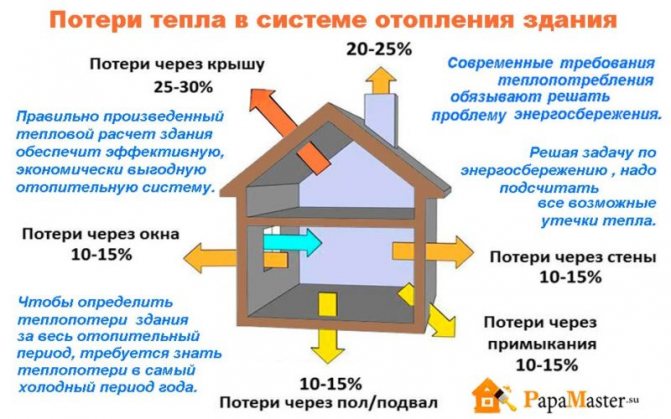

So hot water supply appeared in the receipt, that is, the thermal energy spent on heating cold water. Housing and communal services specialists came to the conclusion that risers and heated towel rails, which are connected to the hot water supply circuit, consume thermal energy to heat non-residential premises. Until 2013, this energy was not taken into account in receipts, and consumers used it for decades at no cost, since outside the heating season, air heating in the bathroom continued. Based on this, officials divided the tariff into two components, and now citizens have to pay for hot water supply.
Excerpt from legislation or how to pay for water by the meter
Consider how many nuances there are when calculating liters, according to which it will be possible to pay for drinking liquid in an apartment or a private house. To date, these data have already been approved, but they are far from ideal. Therefore, in different regions, such a calculation may vary in amount.
Basically, the amount that we receive in the receipt is measured from the following terms:
For an apartment with cold water, you often have to pay for a hot liquid suitable for drinking and separately for bathing, which can be laborious to calculate yourself. Here, payment is made for two services at the same time: when providing water supply and sanitation.
When paying on incoming invoices, it is recommended to keep all receipts and stubs. Since if the controllers come to take readings, they have the right to demand a receipt for payment. A log of visits should also be provided, where you will put your signature.
Household meters can be installed in the entrances, when calculating the amount of cost, it is divided between all tenants.
Where to file a complaint
If the legitimacy of the additional line "water heating" in the receipts is questionable, so as not to overpay for heating, it is recommended to first contact the Criminal Code with a request to explain what this item means. The appearance of a new line in the receipt is legal only on the basis of the decision of the owner of the MKD premises. In the absence of such a decision, you should write a complaint to the GZI.After filing a claim with the Criminal Code, you must be provided with an answer with explanations within thirty days. In case of refusal to substantiate why such a service is prescribed in the receipt, a complaint should be filed with the prosecutor's office with a claim to the court. In this case, if you have already paid the amount indicated in the receipt, Article 395 of the Civil Code of the Russian Federation will serve as the basis for the claim. If a refund is not required, but you have to pay for services that you are not provided with, file a lawsuit to exclude the line "water heating". In this case, it is worth referring to Article 16 of the Law "On Protection of Consumer Rights".
When paying for utilities, consumers see various abbreviations in receipts. It is important to know what is behind these letters and where the money is going. DHW is a hot water service. But what it includes and what it consists of, let's take a closer look.
ONE: a duty or a whim of the public utilities?
Citizens, tenants and landlords must pay utilities on a monthly basis, so calculations should be carried out regularly. The slightest delay is worth a fine on the service. You can often find additional payment numbers in the stubs.
It is noted that one must be paid by residents when living in an apartment building and using common house services. Payment for one is spelled out in the Federal Law, which provides for the provision of water supply and sewerage services in apartment buildings. To date, there is no compliance with the norms of a liquid intended for public needs, how many liters should be used.
When providing communications for household and other needs, the organization should be guided by a special formula to determine the calculation for one. Often the payment for such a service is calculated for each living space individually. It will also be affected by whether the house has a water meter.
- It is necessary to take the correct readings, which were shown by the general house meter, subtract the volume that was consumed by non-residential apartments, apartments that calculate payment according to the standard and rooms that have an installed meter.
- The amount of cubic meters that turned out to be used for general house needs is multiplied by the area of a certain apartment and divided by the area that is made up of all residential and non-residential premises in an apartment building. Such conditions are also established for hot water, if it is supplied to the house.
The normative consumption of one for each separate region is approved by the regional administration and the government. The price is set depending on the hot and other type of security. Ultimately, the receipt indicates the tariff at which everything is required to be calculated.
What exactly do you have to pay for?
Now it is required to pay for common house needs often causes bewilderment among tenants. In this section, we will try to figure out what is the calculation for one service for hot and cold water supply. If this requirement is not met, housing and communal services workers have the right to remove the meter and seal the pipeline.
In the matter of providing water, such a combination of letters means general house needs such as cleaning floors and stairwells between floors, cleaning courtyards and windows. Watering the front gardens in the courtyard and caring for lawns is also included in the tariff for paying for water supply for one.
For example, residents of an apartment building decided to independently clean up the territory, water the land, monitor the state of the entrances, and also fulfill other needs. They should be calculated first. For all this, a certain amount of fluid is used (perhaps a certain number of liters of hot) for general household needs. There is a certain norm for how many cubes should be.
Usually, for one, a separate water intake valve is used, on which a liquid metering and control meter is installed, on which the entire consumed volume is recorded, as a result, the calculation is carried out.
Make-up and coolant leaks
Make-up - a coolant additionally supplied to the heat supply system to replenish its technological consumption and losses during the transfer of heat energy.
Coolant leaks - loss of water through leaks in technological equipment and heat-consuming installations.
Like any other utility network, the heating system requires constant maintenance and checks. Otherwise, it will not function normally. For example, you need to periodically add water to the heating system. Total fluid losses can have a significant negative impact on the performance of the heating system.
The working volume of the coolant in the heating network may decrease due to a number of reasons:
- As a result of leaks, water can flow out of the circuit at the joints of the pipes when they are depressurized.
- With a critical increase in pressure in the system and the activation of the emergency valve. In this case, part of the coolant is simply discharged from the pipes.
- In open systems, due to evaporation from the expansion tank. Such elements of the heating system in our time are not completely open.
They are simply designed to be in contact with the atmosphere. But still, in tanks of this type, the evaporation of water is usually quite intense.
- Due to the operation of the air vents. When removing accumulated air bubbles from the circuit, for example, through the Mayevsky taps, part of the coolant also comes out (in the form of steam).
- Through coarse filters. Such devices require periodic flushing. During this procedure, some of the coolant from the circuit may also be lost.
- During emergency or planned repairs.
Leakage in the heating system
Emergency situations in the communications of a private house happen quite often. Even the highest quality equipment and new pipes fail under the influence of various factors. A leak in the heating system is an unpleasant phenomenon, but it can be solved, the main thing is to detect the problem in time and take the necessary measures.
Leakage reasons
It is important not only to detect a coolant leak in the heating system, but also to understand for what reasons it has arisen. Situations in which a pressure gauge may indicate low pressure
- violation of the tightness of the joints as a result of corrosion of pipes, wear of gaskets or loosening of threaded connections;
- thermal expansion and contraction of fittings. When the coolant reaches a certain temperature, the metal parts expand, but as soon as the water cools down, the metal of the fittings narrows and begins to let the liquid through;
- change of the coolant in the pipes. If you first used water, and then decided to pour antifreeze into the system, the seals can expand, then dry out;
- overpressure in the heating system due to too small expansion vessel. This can lead to cracks in the pipes.
In addition, leakage occurs as a result of improper installation or operation. This is especially true for metal-plastic highways, which are more sensitive to any violations of the installation technology.
What areas and elements can leak?
The most common leak is in metal pipes. Elements that can be destroyed:
- joints of pipes, adapters and seams;
- one-piece pipe;
- radiator;
- under the lock nut;
- in the underfloor heating circuit;
- space between battery sections.
Most often, cheap polymer pipes are prone to violation of integrity. They break, flow, swell. Reinforced-plastic pipes are also susceptible to leaks if they were incorrectly selected. There are special products for the heating system.If pipes for cold water are installed in it, then under the influence of high temperatures they deform and break through.
Leak diagnostics
Each heating system must be equipped with pressure gauges that will indicate a leak. If the pressure in the system decreases, the readings on the instruments will also deviate in a smaller direction. It is recommended to install pressure gauges on each circuit and trace the presence of depressurization on each of them.
Only specialists with the use of special devices can diagnose a leak underground or in decoration.
- Moisture meters detect a leaking pipe in walls or warm floors. They are not used to test underground utilities.
- Thermal imagers help to find leaks if the pipes are not deeply hidden and the heat transfer medium is high. In the case of cold water and communications buried at a depth, the thermal imager will not be able to work.
- Acoustic devices detect leaks by detecting sounds.
Leakage in the heating system
A leak in the heating system can be found with a thermal imager.
Signs of a critical coolant shortage
Even if the heating scheme is planned and installed correctly, sometimes the loss of the coolant cannot be avoided. A decrease in the volume of water can be recorded visually, but there are times when losses are invisible to the eyes.
Not everyone monitors the technical condition of water heating, it works - and okay. When a latent leak forms, the system continues to function for a while until the amount of coolant drops to a critical level. This moment is tracked on the following grounds:
- In an open system, the expansion vessel is first emptied, then the main riser that rises from the boiler is filled with air. Result: cold batteries with overheating of the supply pipe, turning on the maximum speed of the circulation pump does not help.
- The lack of water during gravity wiring manifests itself in a similar way, in addition, you can hear the bubbling of water in the riser.
- On gas fuel (open circuit), there are frequent burner starts / burners - clocking, the TT boiler overheats and boils.
- Lack of coolant in a closed (pressure) circuit is reflected in the pressure gauge - the pressure gradually decreases. Wall-mounted models of gas boilers automatically stop when they fall below a threshold of 0.8 bar.
- Floor-standing non-volatile units and solid fuel boilers continue to regularly heat the remaining water in a closed system until the volume released by the coolant is filled with air. The circulation will stop, overheating occurs, the safety valve will work.

